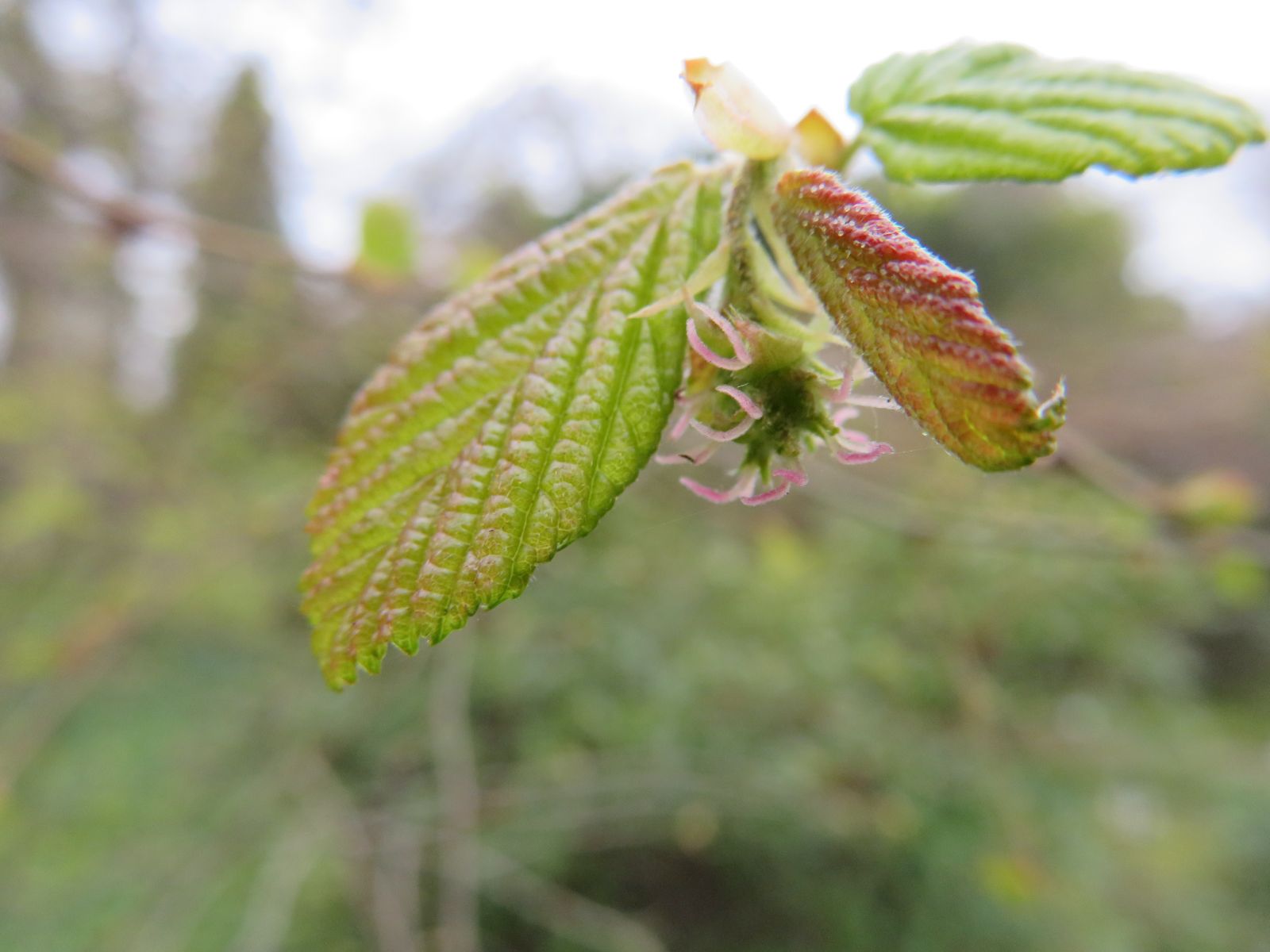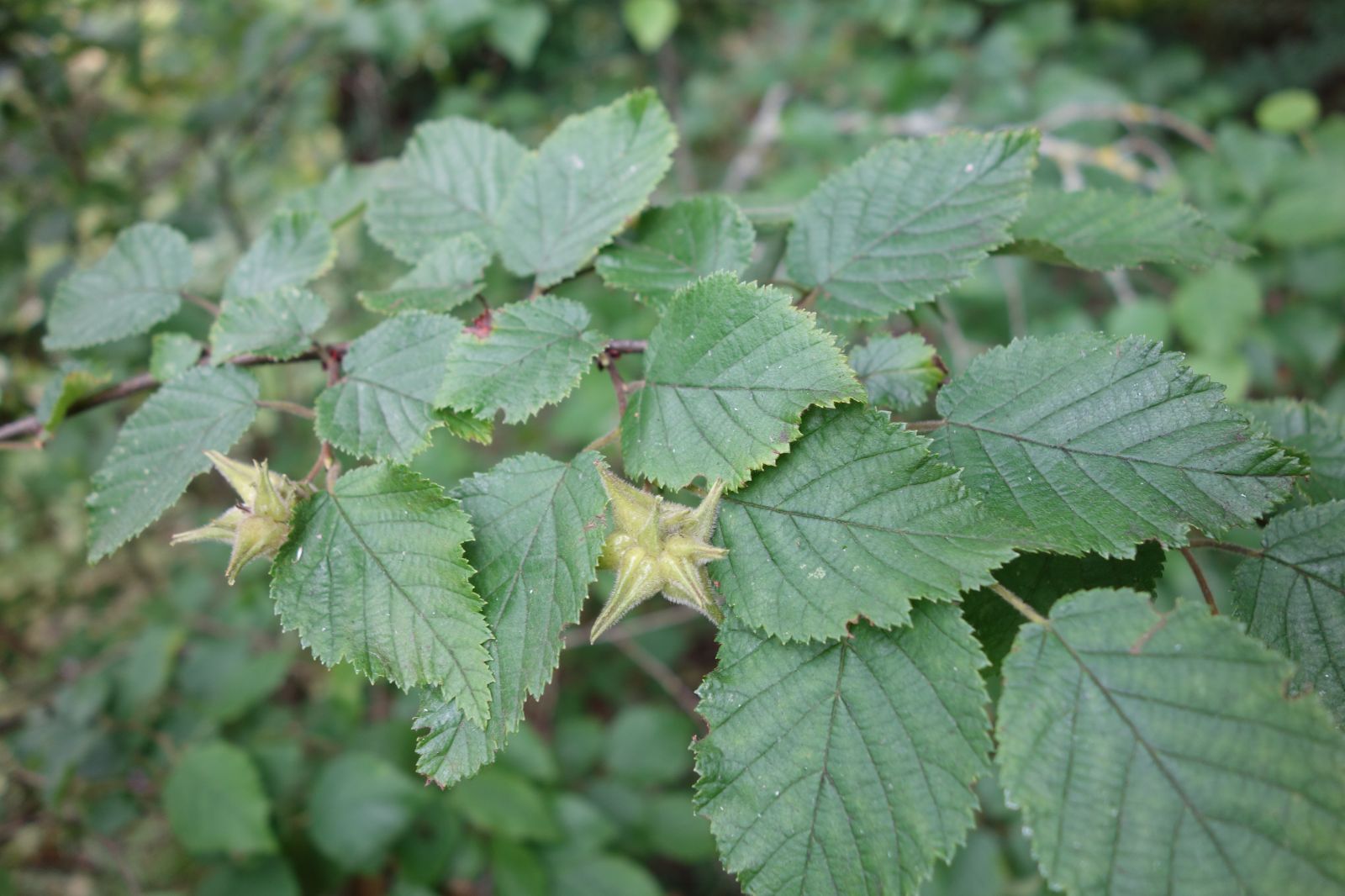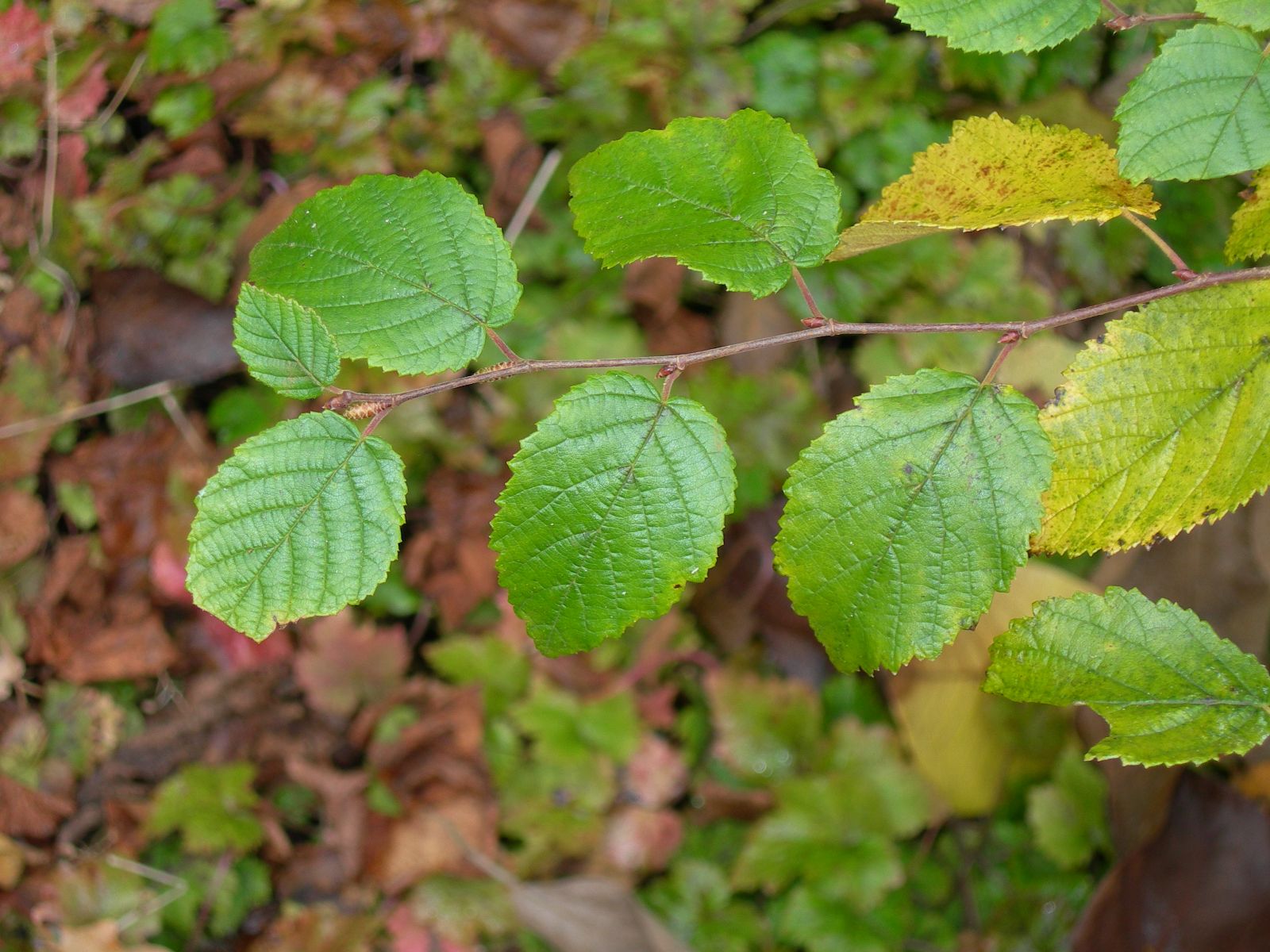Ostryopsis davidiana
Sponsor
Kindly sponsored by
Claire Mansel Lewis
Credits
Owen Johnson (2022)
Recommended citation
Johnson, O. (2022), 'Ostryopsis davidiana' from the website Trees and Shrubs Online (treesandshrubsonline.
Other taxa in genus
Shrub to 3 m tall, suckering from the base. Bark grey. Twigs brown, densely pubescent. Leaf ovate to elliptic or obovate, 2–6.5 × 1.5–5 cm; base cordate to rounded, apex abruptly pointed; dull green and sparsely pubescent above, more densely so underneath where there are axillary tufts and also yellow or brown resinous glands; margin sharply and irregularly doubly serrate; side-veins in 7–9 pairs; petiole short (3–12 mm), densely pubescent. Male catkin 12–20 mm long, nodding. Female flowers clustered on a slender, densely pubescent, erect peduncle to 25 mm long. Fruit in terminal clusters of 8–12; bracts forming a leathery, densely pubescent, tubular sheath 10–15 mm long, with 3 sharp points. Nutlet brown, 4–6 × 4–5 mm, sparsely pubescent, ribbed. (Li & Skvortsov 1999; Bean 1976).
Distribution China Gansu, Hebei, Liaoning, Nei Mongol, Ningxia, Shaanxi, Shanxi, W Sichuan
Habitat Open woodland and scrub, to 2800 m in the south of its range; widely planted for erosion control.
USDA Hardiness Zone 3
RHS Hardiness Rating H7
Conservation status Least concern (LC)
With its combined features of a hazel, a hornbeam and a hop-hornbeam, Ostryopsis davidiana is likely to be dismissed – if noticed at all – as a mere curiosity. It forms a modest shrub which is certainly never eye-catching, though its little nuts are apparently tasty (Wikipedia 2022) and its female flowers, in late spring, have the ruby-red styles of a hazel – but, being clustered and upstanding at the tips of the new growths, they are much easier to spot. The species was named by Joseph Decaisne in 1873, after the French missionary Armand David who had collected specimens. Emil Bretschneider first introduced it to Kew, from the mountains near Beijing, in 1883 (Bean 1976).
This is an easy shrub to grow and is very hardy, having apparently persisted in northern China during the peak of the last glaciation (Tian et al. 2009); its limits as a garden plant have presumably never been thoroughly tested, and the hardiness assessment (above) is guess-work. Despite its general inconspicuousness, Ostryopsis has persisted in cultivation, and a range of online images – from the Savill Garden in the UK, the Morton Arboretum near Chicago, the Bonn Botanic Garden in Germany, the Strasbourg Botanical Gardens in France and the Iturraran Botanic Garden in northern Spain – testify to the species’ quiet charm and general adaptability. In 2022 it was commercially available from Mundi Plantarum in Belgium (les Jardins du Florilege 2022).



